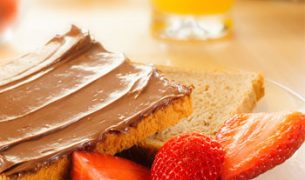Who hasn’t felt that mid-afternoon slump, when lunch starts to feel like the distant past and dinner still seems far beyond the horizon? Keeping in mind the fact that 76% of French people get a hungry feeling at some time during the day between meals,1 it’s important to consider snack-time as a comforting gourmet break in the afternoon that calms impatient stomachs, and helps to avoid irregular nibbling and properly distribute food intake over the course of the day.
Snack-time: an important part of nutritional balance
For some people it’s a very necessary meal, since it enables them to round out their nutrient intake. This is the case for children, pregnant women and senior citizens, who have increased calcium needs (snack-time allows them to fit in an additional dairy product). Athletes need it too, since they have an increased level of energy expenditure.
For others, it just satisfies those little pangs of desire for something tasty. But remember to keep up the proper nutritional balance! Snack-time should represent between 10 and 15% of your daily energy intake. Ideally, this should be composed of 2 to 3 types of foods chosen from the following:
- a cereal product (bread, cookies, cereal grains…) which will bring energy;
- a dairy product (yogurt, milk -chocolate or not- cheese, etc.), which is a good source of calcium and protein,
- some fruit or fruit juice for fibers and vitamins
You might also consider including a drink in your snack-time meal.
Children are often fond of snack-time, so for an optimum meal, don’t let it go on too long (15 minutes are enough to be sure the kids will still have an appetite by dinner time), and limit the amount of cookies they can have (try to stay within predefined portions).
Come and get it!
1. IFOP-ANPP – Survey – march 2011





